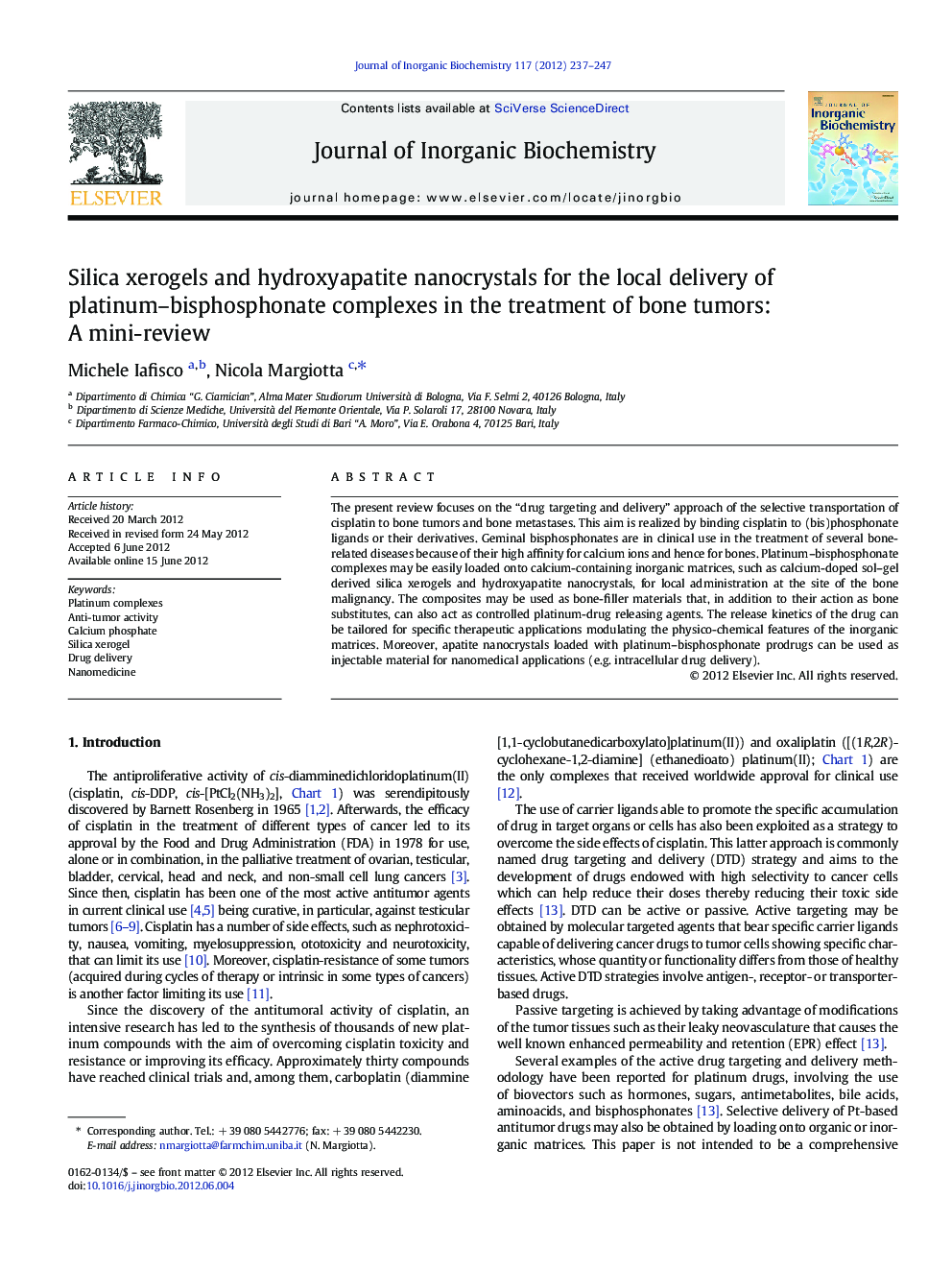| Article ID | Journal | Published Year | Pages | File Type |
|---|---|---|---|---|
| 1317725 | Journal of Inorganic Biochemistry | 2012 | 11 Pages |
The present review focuses on the “drug targeting and delivery” approach of the selective transportation of cisplatin to bone tumors and bone metastases. This aim is realized by binding cisplatin to (bis)phosphonate ligands or their derivatives. Geminal bisphosphonates are in clinical use in the treatment of several bone-related diseases because of their high affinity for calcium ions and hence for bones. Platinum–bisphosphonate complexes may be easily loaded onto calcium-containing inorganic matrices, such as calcium-doped sol–gel derived silica xerogels and hydroxyapatite nanocrystals, for local administration at the site of the bone malignancy. The composites may be used as bone-filler materials that, in addition to their action as bone substitutes, can also act as controlled platinum-drug releasing agents. The release kinetics of the drug can be tailored for specific therapeutic applications modulating the physico-chemical features of the inorganic matrices. Moreover, apatite nanocrystals loaded with platinum–bisphosphonate prodrugs can be used as injectable material for nanomedical applications (e.g. intracellular drug delivery).
Graphical abstractPlatinum–bisphosphonate complexes are easily loaded onto calcium-containing inorganic matrices, such as calcium-doped sol–gel derived silica xerogels and hydroxyapatite nanocrystals, for local administration at the site of bone malignancies.Figure optionsDownload full-size imageDownload as PowerPoint slide
